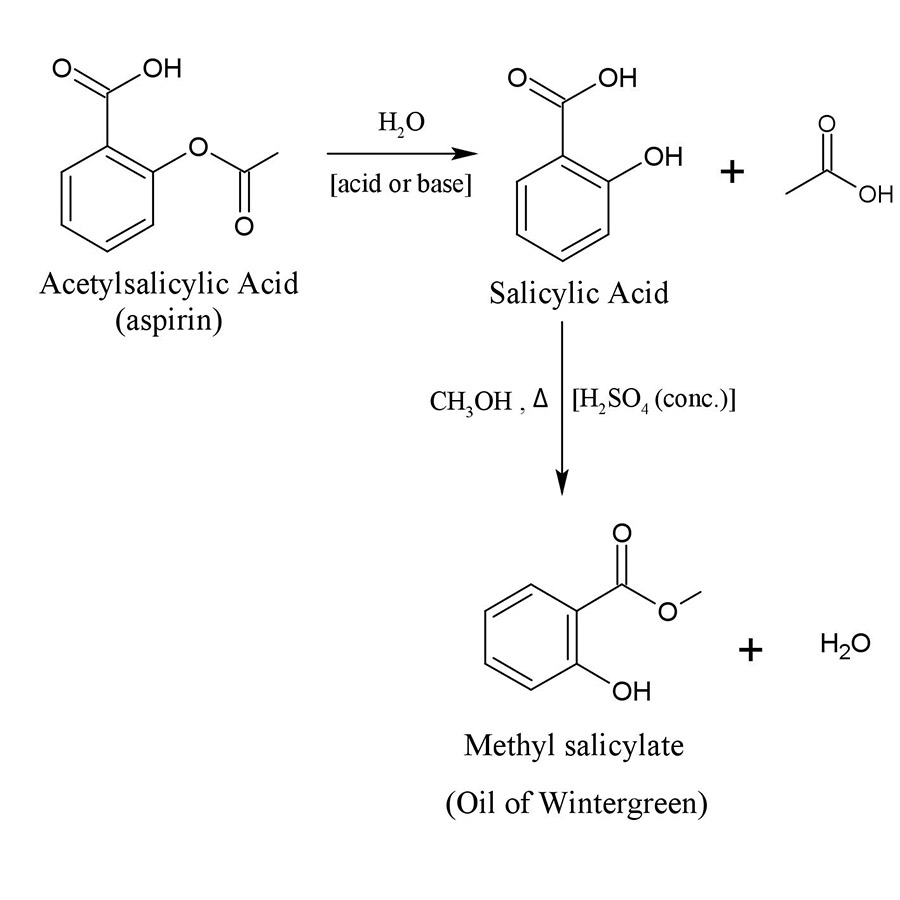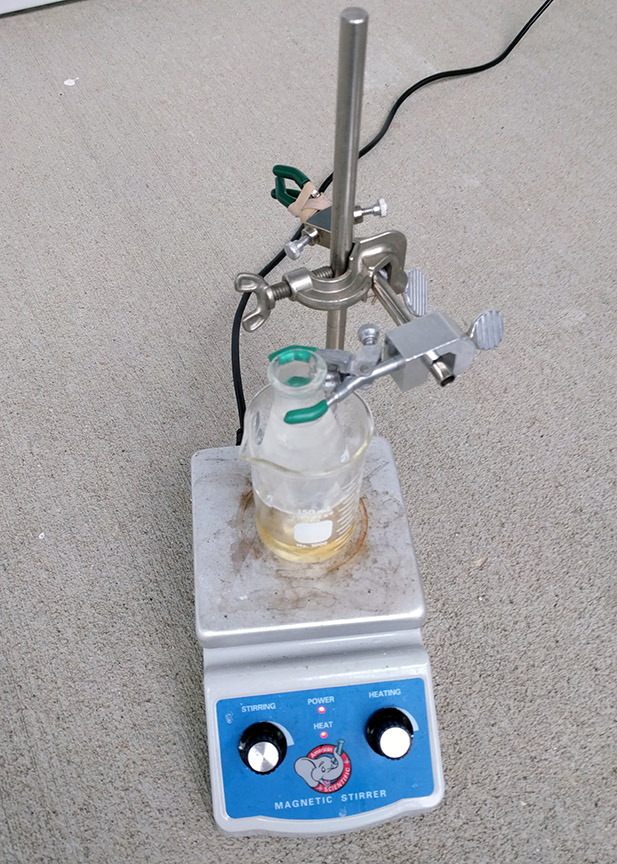Methyl Salicylate Synthesis
Methyl salicylate is an organic ester responsible for the minty smell of wintergreen. This synthesis will use off-the-shelf starting materials including aspirin, antifreeze, and drain cleaner.
Background Link to heading
The synthesis is broken down into two parts: hydrolysis of the aspirin and esterification.
Our starting material is aspirin (acetylsalicylic acid). In the first step, water is used to break the ester bond. This hydrolysis reaction can be accomplished through either acid or base catalysis. This removes the acetate from the aspirin. Quenching with water will leave both acid products in their protonated form. If base-catalyzed hydrolysis is used, both acids will likely be deprotonated, and acid will need to be added to separate the salicylic acid (water insoluble) from the acetic acid (water soluble).
The second step is a standard Fisher esterification. This reaction will connect the salicylic acid to the methanol with concentrated sulfuric acid as the catalyst.

Methyl salicylate synthesis pathway
Procedure Link to heading
In practice, I decided to perform the reaction in a single flask and use concentrated sulfuric acid to complete both steps at the same time. The sulfuric acid came from hardware-store drain cleaner. It is important that the drain cleaner be liquid and sulfuric-acid-based. There are many drain cleaners today that rely on sodium hydroxide or other chemicals. The aspirin tablets were crushed into a powder before transferring to the beaker.
The primary difficulty was in the limitation of the glassware. Without a proper reflux setup, I improvised by filling an Erlenmeyer flask with ice water and lowering it over the beaker. This reduced the amount of methanol fumes produced, but needless to say, ventilation is absolutely critical.

The impromptu reflux setup for the synthesis. The upper Erlenmeyer flask is filled with ice water to act as a reflux column. The bottom beaker has a stir bar with the methanol, salicylic acid, and sulfuric acid.
After refluxing, the resulting solution smelled quite strongly of wintergreen which indicates that the experiment was, to some extent, successful.
Improvements Link to heading
There are a number of areas in which this synthsis could have been improved. The aspirin tablets contain a lot of filler that could have been fairly easily separated from the acetylsalicylic acid. The drain cleaner I used contained additives that could have been separated. Alternatively, sulfuric acid can also just be purchased directly at very reasonable costs. The final solution had a brown-orange tint which is the result of contamination since methyl salicylate should be a colorless oil. With the necessary glassware, it would have been appropriate to distill the resulting solution. This would have also allowed me to calculate the yield.